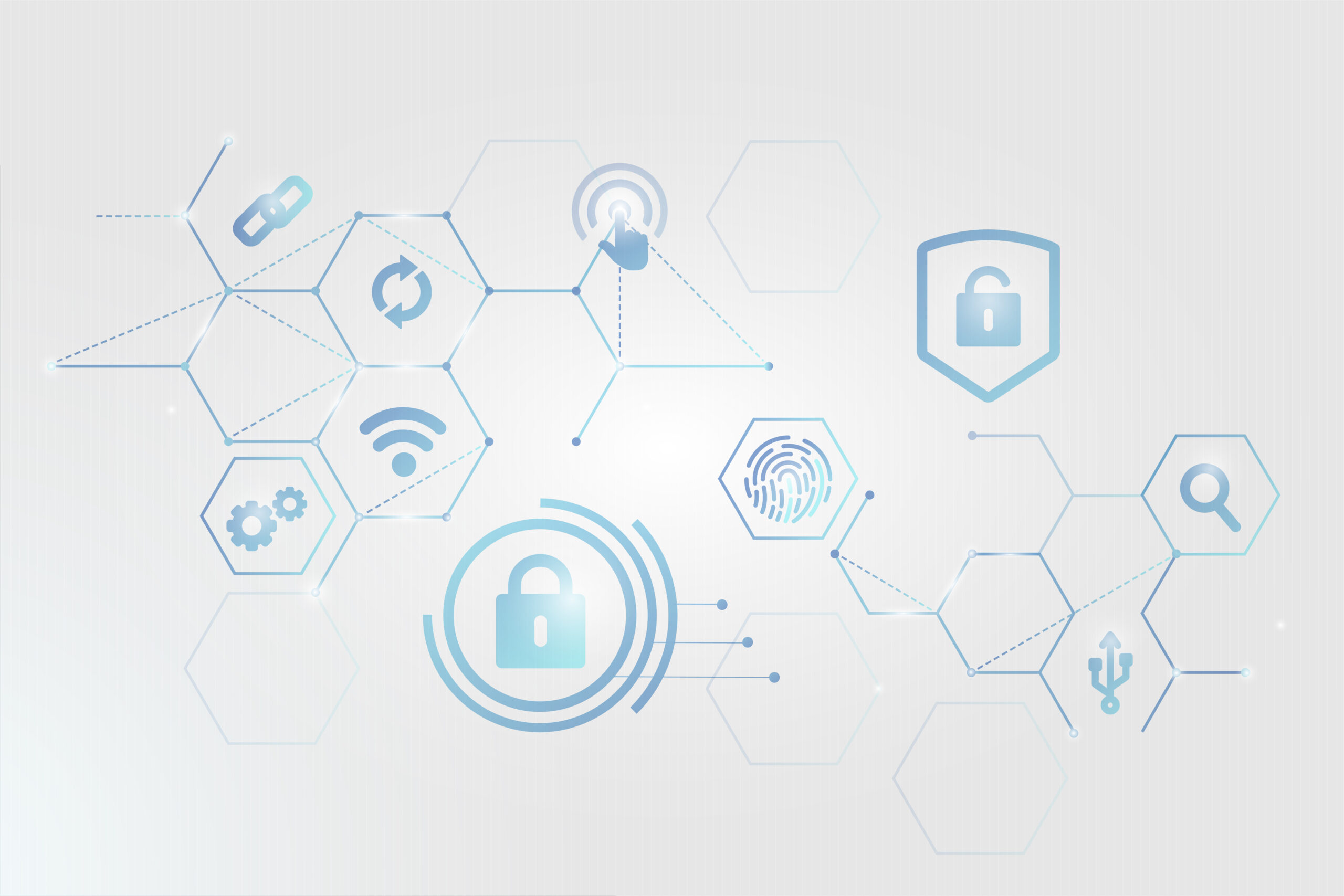With cyber attacks increasing by 38% year-over-year according to recent industry reports, businesses can no longer afford to operate without understanding their security vulnerabilities. Every day, organizations face sophisticated threats that can cripple operations, steal sensitive data, and damage hard-earned reputations. The question isn’t whether your business will be targeted—it’s whether you’ll be prepared when it happens.
Key Takeaway: A cybersecurity risk assessment identifies vulnerabilities, evaluates threats, and provides actionable strategies to protect your business from cyber attacks while ensuring regulatory compliance. This systematic approach helps organizations prioritize security investments and build robust defense strategies.
At Right Hand Technology Group, we’ve seen firsthand how comprehensive risk assessments transform businesses from reactive to proactive in their cybersecurity approach. Our team works with companies across industries to identify potential security gaps before they become costly breaches. Through this guide, we’ll walk you through everything you need to know about cybersecurity risk assessment and how it protects your organization.
Related Topic: Why Cybersecurity Is the Best Investment for Your Small Business?
What Is a Cybersecurity Risk Assessment?
A cybersecurity risk assessment is a systematic evaluation of your organization’s information systems, networks, and data to identify potential security vulnerabilities and threats. This comprehensive security risk analysis examines how cyber threats could impact your business operations, financial stability, and regulatory compliance status.
Our cybersecurity professionals define risk assessment as a three-part process: identifying assets that need protection, evaluating potential threats to those assets, and determining the likelihood and impact of successful attacks. The process goes beyond simple vulnerability scanning to provide a complete picture of your organization’s security posture.
During a typical information security evaluation, our team examines multiple layers of your technology infrastructure. We assess network security controls, endpoint protection systems, data storage practices, and employee access privileges. This threat assessment process also includes reviewing your current security policies, incident response procedures, and business continuity plans.
The goal isn’t just to find problems—it’s to understand how those problems could affect your specific business environment. We consider factors like your industry regulations, competitive landscape, and operational dependencies. This business-focused approach ensures that cybersecurity risk assessment results translate into meaningful protection strategies rather than generic recommendations.
A cybersecurity risk assessment systematically identifies security vulnerabilities and evaluates potential threats to help organizations prioritize protection efforts.
Related Topic: Smart Cybersecurity for Manufacturing: Defend, Detect, Comply
Why Your Business Needs Regular Risk Assessments?
Regular cybersecurity risk assessments provide essential protection against an evolving threat landscape that continues to grow more sophisticated. Our experience working with businesses across various sectors shows that organizations conducting annual assessments reduce their risk of successful attacks by up to 60% compared to those without formal assessment programs.
The business case for risk management framework implementation extends beyond immediate threat protection. Companies that maintain current risk assessments often qualify for reduced cybersecurity insurance premiums and demonstrate due diligence to customers, partners, and regulatory bodies. We’ve helped clients use assessment results to secure better insurance terms and win new business by showcasing their commitment to data protection.
Regulatory compliance requirements make regular assessments mandatory for many industries. HIPAA, SOX, PCI DSS, and emerging regulations like CMMC all require documented risk evaluation processes. Our team has guided organizations through compliance requirements, ensuring their cybersecurity compliance check procedures meet or exceed regulatory standards while supporting broader business objectives.
The financial impact of cyber incidents continues to escalate, with the average data breach now costing organizations $4.88 million according to IBM’s 2024 Cost of a Data Breach Report. Beyond direct financial losses, businesses face operational disruption, customer trust erosion, and potential legal liability. Regular vulnerability assessment processes help organizations identify and address weaknesses before they become expensive problems.
Regular assessments help businesses stay ahead of evolving threats while meeting compliance requirements and protecting valuable assets.
Related Topic: Pittsburgh SMBs: Your CMMC Compliance Roadmap
The Risk Assessment Process: Step-by-Step Guide
Our cybersecurity team follows a proven risk identification process that ensures comprehensive coverage of all potential vulnerabilities. This security audit methodology has been refined through years of working with organizations ranging from small businesses to enterprise-level corporations.
|
Phase
|
Activities
|
Timeline
|
Key Outputs
|
|
Planning
|
Scope definition, asset inventory, stakeholder interviews
|
1-2 weeks
|
Assessment scope, resource requirements
|
|
Discovery
|
Network scanning, system analysis, policy review
|
2-3 weeks
|
Vulnerability inventory, threat catalog
|
|
Analysis
|
Risk prioritization, impact assessment, gap analysis
|
1-2 weeks
|
Risk register, priority matrix
|
|
Reporting
|
Documentation, recommendations, remediation roadmap
|
1 week
|
Executive summary, technical findings
|
The assessment methodology begins with comprehensive asset identification. We work with your team to catalog all technology assets, from servers and workstations to mobile devices and cloud services. This inventory includes both technical systems and information assets like customer databases, intellectual property, and financial records.
Threat modeling forms the core of our analysis approach. Our experts examine how different threat actors might target your specific environment, considering factors like your industry profile, geographic location, and business model. We evaluate both external threats from cybercriminals and internal risks from employees, contractors, and business partners.
During the security gap analysis phase, we compare your current protection measures against identified threats and industry best practices. This comparison reveals areas where additional controls might be necessary and helps prioritize security investments based on actual risk levels rather than theoretical concerns.
A structured approach ensures comprehensive coverage of all potential vulnerabilities and provides clear priorities for remediation efforts.
Common Cybersecurity Risks to Assess
Organizations today face a wide range of cybersecurity risks that demand proactive evaluation. Identifying these risks early is essential to strengthening defenses and protecting sensitive data. Based on current industry trends, the most common cybersecurity risks fall into several key categories that affect companies of all sizes.
Network vulnerabilities continue to top the list. Unsecured Wi-Fi, outdated routers, and poorly configured firewalls create easy entry points for cybercriminals. Hackers often exploit these weaknesses to infiltrate corporate networks and escalate access to more sensitive systems. Regular audits and timely patching of devices significantly reduce this exposure.
Endpoint security threats have also increased with the rise of remote work. Laptops, smartphones, and personal devices expand the attack surface. Companies that use robust mobile device management (MDM) solutions, enforce strong authentication, and monitor remote access minimize these risks. Evaluating these controls is critical to ensuring secure endpoints.
Human error and social engineering remain major concerns. Phishing emails, weak passwords, and accidental data sharing can open the door to cyberattacks. To address these risks, businesses must assess employee awareness, review access privileges, and test response readiness through simulated attacks and training programs.
Third-party risks have surged in relevance. Vendors, partners, and cloud providers can introduce vulnerabilities if their security measures fall short. Organizations must evaluate vendor contracts, review cloud configurations, and analyze supply chain dependencies to ensure external risks do not compromise internal systems.
A strong cybersecurity risk assessment focuses on these areas to create an effective defense strategy. By actively identifying and addressing network, endpoint, human, and third-party risks, companies stay better protected against evolving threats.
Best Practices for Effective Risk Assessment
Successful cybersecurity risk assessment requires more than just running vulnerability scanners and reviewing security policies. Our cybersecurity professionals have developed proven methodologies that ensure accurate, actionable results that drive meaningful security improvements.
Risk assessment methodology selection significantly impacts the quality and usefulness of results. We typically recommend frameworks like NIST Cybersecurity Framework or ISO 27001 as foundational approaches, then customize the methodology based on specific industry requirements and business contexts. This tailored approach ensures assessments address relevant threats while remaining practical to implement.
Assessment tool selection plays a crucial role in gathering accurate data about your security environment. Our team utilizes a combination of automated scanning tools, manual testing techniques, and configuration reviews. No single security assessment tool provides complete coverage, so we employ multiple approaches to ensure comprehensive evaluation of your security posture.
Stakeholder engagement throughout the assessment process improves both the accuracy of findings and the likelihood of successful remediation efforts. We involve representatives from IT, operations, legal, and executive leadership to ensure all perspectives are considered. This collaborative approach helps identify business-critical assets that might be overlooked in purely technical assessments.
Documentation and follow-up processes determine whether assessment results translate into improved security. Our team provides detailed remediation roadmaps with specific timelines, resource requirements, and success metrics. We also offer ongoing support to help organizations implement recommended controls and measure their effectiveness over time. Organizations looking to strengthen their overall security posture can benefit from understanding cybersecurity best practices that complement formal assessment programs.
Following proven methodologies and leveraging appropriate tools ensures accurate, actionable assessment results.
Summary Highlights
- Cybersecurity risk assessments systematically identify vulnerabilities and evaluate threats to provide actionable protection strategies
- Regular assessments reduce successful attack risk by up to 60% while supporting regulatory compliance requirements
- The assessment process includes asset inventory, threat modeling, vulnerability analysis, and prioritized remediation planning
- Common risk categories include network vulnerabilities, endpoint security gaps, human factors, and third-party dependencies
- Effective assessments require structured methodologies, appropriate tools, stakeholder engagement, and detailed follow-up procedures
- Professional assessment services provide expertise, objectivity, and comprehensive coverage that internal teams often cannot achieve
- Assessment results should translate into specific, measurable security improvements with clear timelines and accountability
- Organizations benefit most when risk assessments become part of an ongoing security management program rather than one-time activities
Common Questions We Hear
How often should we conduct cybersecurity risk assessments?
Most organizations benefit from annual comprehensive risk assessments, with quarterly updates for high-risk environments or rapidly changing business contexts. Our team recommends more frequent assessments for organizations in regulated industries, those experiencing significant growth, or companies that have recently implemented major technology changes. The key is establishing a regular rhythm that allows your security program to evolve with your business and the threat landscape.
What’s the difference between a risk assessment and a penetration test?
A cybersecurity risk assessment provides comprehensive evaluation of your entire security posture, including policies, procedures, and technical controls. Penetration testing focuses specifically on attempting to exploit technical vulnerabilities to simulate real-world attacks. Risk assessments offer broader coverage and strategic guidance, while penetration tests provide tactical validation of specific security controls. We typically recommend risk assessments as the foundation for security planning, with penetration tests used to validate the effectiveness of implemented controls.
How long does a typical cybersecurity risk assessment take?
Assessment duration depends on organizational size, complexity, and scope requirements. Small businesses with straightforward technology environments typically require 4-6 weeks for comprehensive assessment, while larger organizations with complex infrastructure may need 8-12 weeks. Our team works with clients to establish realistic timelines that balance thoroughness with business needs, ensuring minimal disruption to daily operations while gathering necessary information for accurate risk evaluation.
Ready to strengthen your organization’s cybersecurity posture? Our experienced team at Right Hand Technology Group specializes in comprehensive risk assessments that provide clear, actionable guidance for protecting your business. Contact us today to learn how our cybersecurity management services can help you build robust cyber defenses that support your business objectives.











